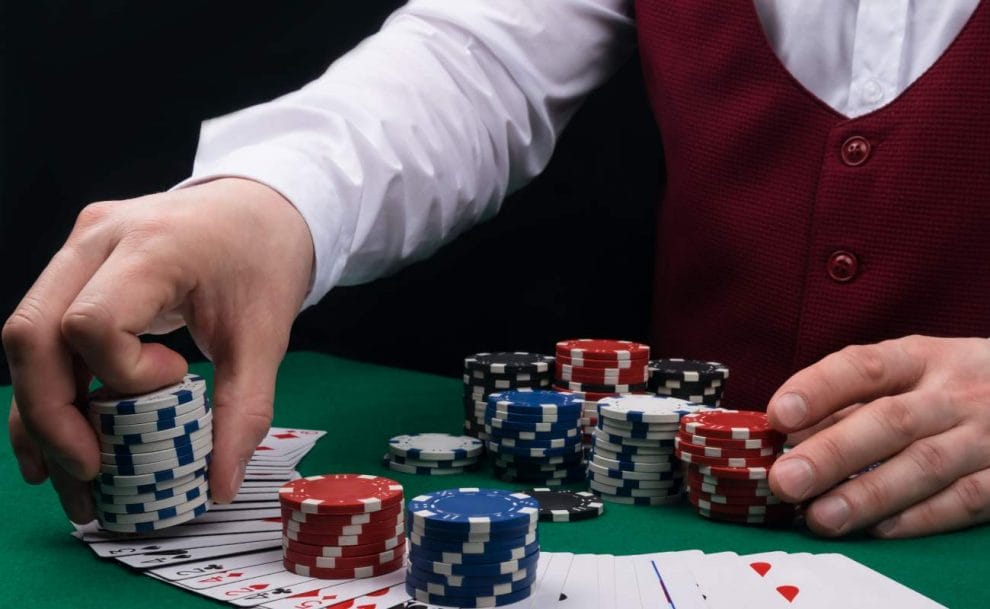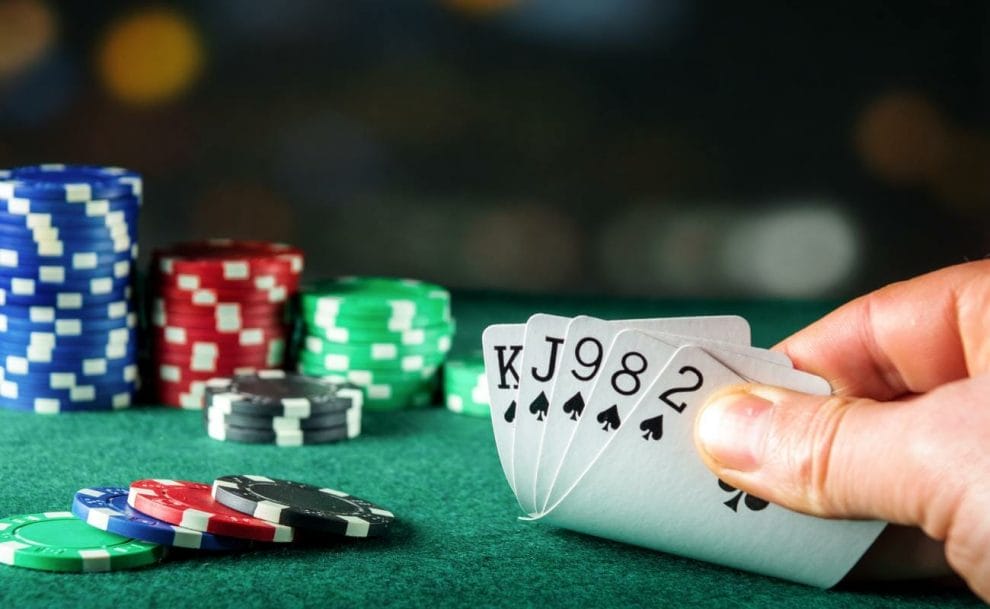
A check-raise is one of the most effective bluffing tactics to use when playing poker in person – and particularly when you play poker online. For one, it’s a really clever way of exposing opponents’ Texas Hold’em poker hands.
It’s not just particularly useful when you’re playing online poker (given the absence of visual cues,) but is also a smart way of limiting reverse implied odds when you’re holding a marginal hand. Over the years, many pros have used check-raises to great effect to win millions of dollars at numerous online poker tournaments.
Be careful, though. As with most bluffs, a check-raise must be used sparingly as a strategic tool and only when the time is right. If you overuse it, you risk your opponent reading the bluff.
Here is a guide to what a check-raise is, why it’s a great tactic and when to use it effectively.
What Is a Check-Raise?
A check-raise is a poker move that entails checking an opponent with the intention of raising again after the opponent bets again.
Let’s assume it’s your turn to play. Instead of betting right away, you choose to check, that is, decline to bet. Then, when your opponent bets, you “raise” their bet by putting in a higher amount.
The check-raise is a sneaky move that uses a bluff to either convince your opponents that you’re strong when you’re not – or weak when, in fact, you’re strong.
Why Use a Check-Raise?

There are two key reasons to check-raise. The first is to load the pot and extract the highest value from a win when you hold the nuts. The second is to bluff (or semi-bluff) to get your opponent to throw their hand when your hand is actually weak.
Remember, when check-raising for extra value from the pot, it works best when you’re playing against multiple players. Bluffing and semi-bluffing when you’re holding a marginal hand are strategies best used against a single opponent.
When To Use a Check-Raise?
The check-raise is a versatile move in poker, but there are certain situations in which it can be particularly effective. Here are some of them.
A Monster Hand
This is the most common use of a check-raise. If you have a strong hand, you can check your opponent in the hope that they will bet with a weaker hand. They assume that you checked because you’re weak.
Once they’ve bet, you re-raise and force them either to call or fold. A key point here is to ensure that your raise is large enough (at least double your opponent’s bet) to induce the fold even if they hold moderately strong cards. Of course, if you’re holding a monster hand it shouldn’t matter.
The Bluff or Semi-Bluff

This is slightly riskier because the intention is to use a raise to convince the opponent that you’re holding a strong hand when in fact you’re quite weak. If the opponent calls your bluff and has a stronger hand, you will lose big.
Pulling off the bluff is usually easier with novice players who aren’t familiar with check-raise as a tactic, while more experienced players will likely do the math and consequently be less vulnerable because of their assessment of opponents’ hands.
Meeting Aggression
If you’re playing against an opponent who likes to bet a lot, you can use the check-raise to take advantage of their aggression. By checking, you give them the opportunity to bet with confidence and then raise them knowing that you’re holding a solid hand. This is less effective as a bluff since an aggressive opponent is unlikely to take the bait.
Coming In First
Sitting in one of the earlier positions in the round presents the best opportunity to check-raise. When you’re one of the last to play, there’s no way to be sure that the players behind you will bet, which restricts your ability to raise again.
On the Draw
Holding a drawing hand when check-raising can be more cost-effective as your opponent may occasionally call your re-raise, resulting in potential winnings. On the other hand, if you’re weak, you’ll have to check and fold to any future bets, losing the initial amount you raised.
Having a good draw when your opponent calls increases your chances of winning the entire pot when you make your draw. Additionally, if you check-raise on the flop, your opponent may hesitate to bet in future rounds, potentially giving you a free card and more chances to complete your draw.
Small Pots
Check-raising on small pots is far more effective because the size of the bet required for your opponent to see the next card will increase in proportion to the pot size. This results in unfavorable pot odds for them to call and make a second pair or complete their draw.
Make Borgata Online Your Strategic Poker Move
Knowing when to check-raise is one of those key poker skills you simply cannot do without as a budding poker pro. Why not register at Borgata Online and test your mettle? Whether you’re a Texas Hold’em enthusiast or prefer the relative complexity of Omaha poker, Borgata has a vast range of online casino games. We offer everything from slots and bingo to all the live dealer casino games and poker games you could think of to play online.
